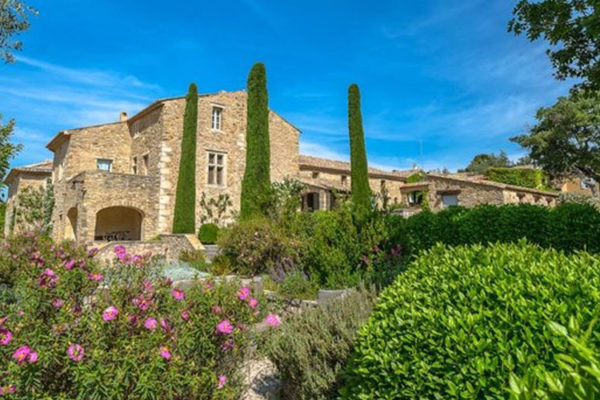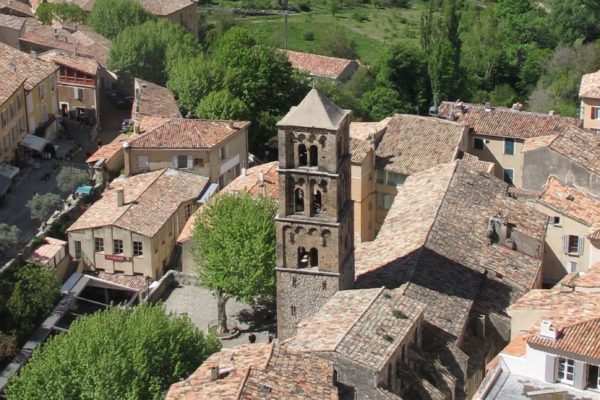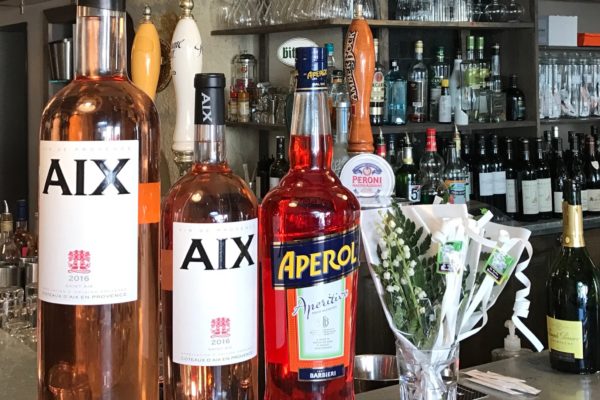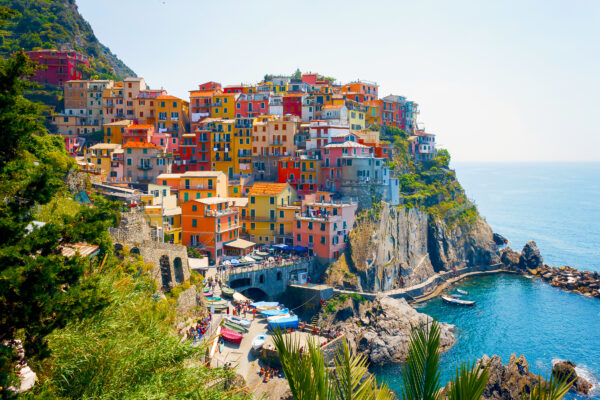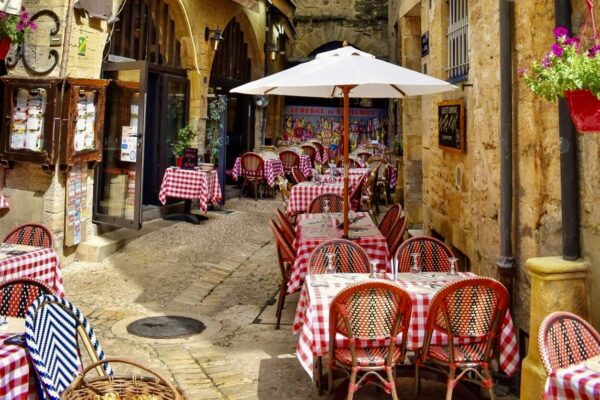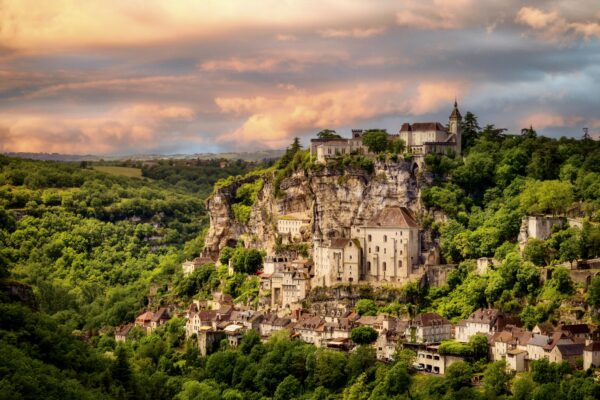La Belle Provence
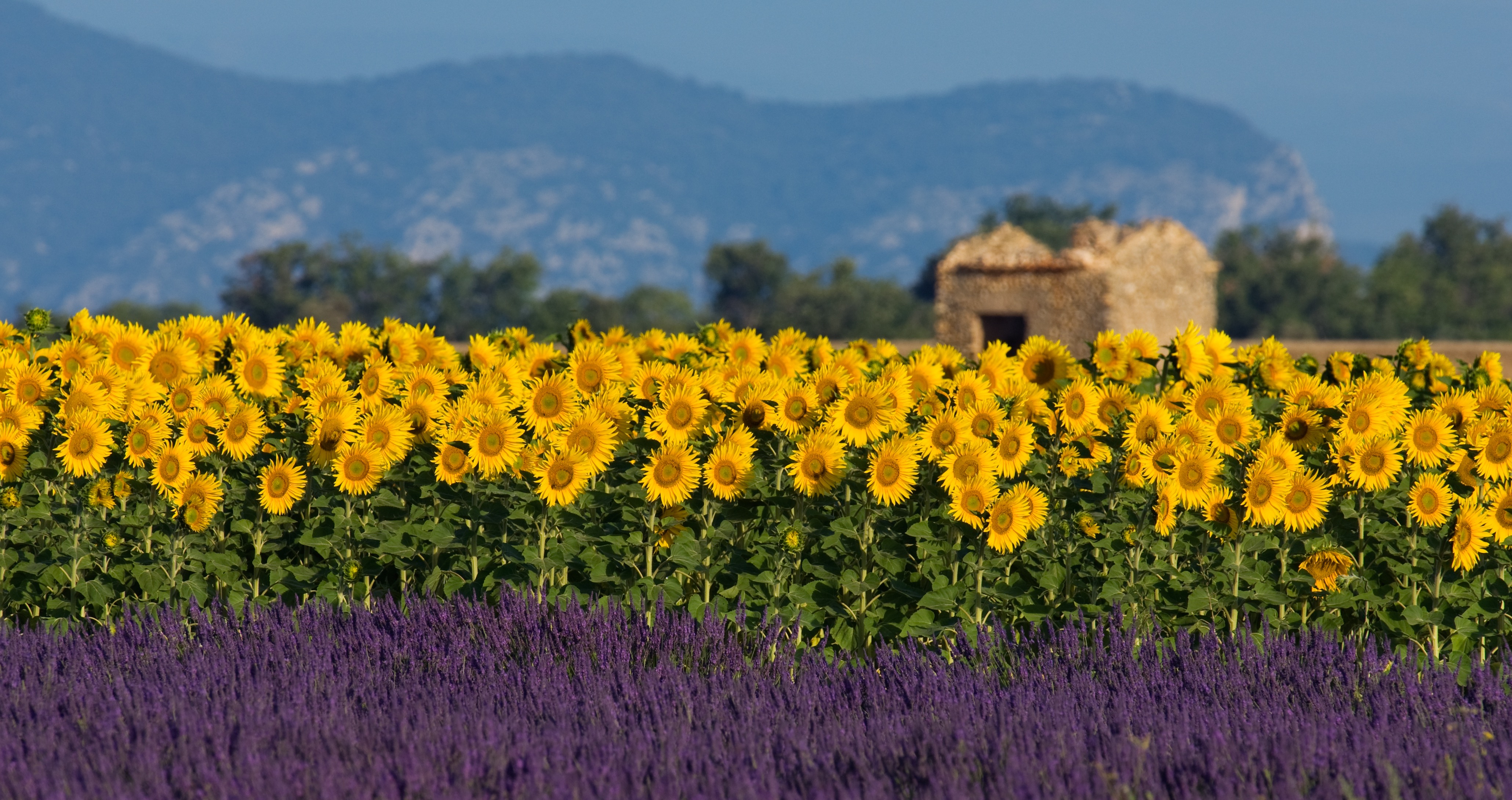
Text & photos by Marla Norman, TCO Publisher
The colors — intense and brilliant — are what you first notice about Provence. Cerulean blue, yellow ochre, burnt sienna. You feel as if you’ve been dropped into a French Impressionist painting….and you have!
In the unlikely event that you weren’t already aware of Provence’s influence on modern art, you’ll learn about it quickly. In the 19th and 20th centuries Cézanne, Renoir, Van Gogh, Matisse, Monet, Picasso, Gaugin, Braque, Derain, Dufy and Bonnard converged on Provence. The “luminosity” as Matisse described the Provençal climate, provided an ideal light for painting and artistic inspiration that led to new interpretations and invention. “Provence fires the senses. Makes your hand more agile, your eye sharper,” according to Van Gogh.
Provence’s temperate climate and strategic location have been attractions for centuries. in fact, some of the earliest sites of human habitation are along the coast of Provence, dating back to an astounding 1.05 million years BC. The Celts established settlements throughout the region between the 5th and 8th centuries B.C. Much later, the Greeks founded one of the major trading ports of the ancient world in 600 BC at Massalia, known today as Marseille.
The Romans appeared in Provence in the 2nd century BC. and made the region their first permanent state within Gaul. Roman roads, amphitheaters, arches, temples, and aqueducts stretch across the region — a tribute to Roman engineering and fascinating sites for historians and tourists.

The much-loved Provençal Rosés chill in a small plaza in Aix.
AIX MARKS THE SPOT
Established in 123 BC, Aix-en-Provence is the oldest Roman site in the region. It’s also the largest and most cosmopolitan city in Provence and makes a perfect base for day trips.
Our favorite lodging is Le Four des Banes, a bed and breakfast conveniently located just outside Aix-en-Provence. The property owner, Laurence Biancotto, is a superb host and delights in helping her guests plan visits to local museums, restaurants, markets, etc.
She also provides delicious breakfasts daily with Provençal jellies, honey and baked goods. Be sure to have Laurence show you the ancient Roman oven that is the center piece of her kitchen. Additionally, the property with it’s pool, gardens and open space is ideal for families with children. There are even two donkeys to entertain visitors. Say “hello” to Farouk and Fougueux for us!
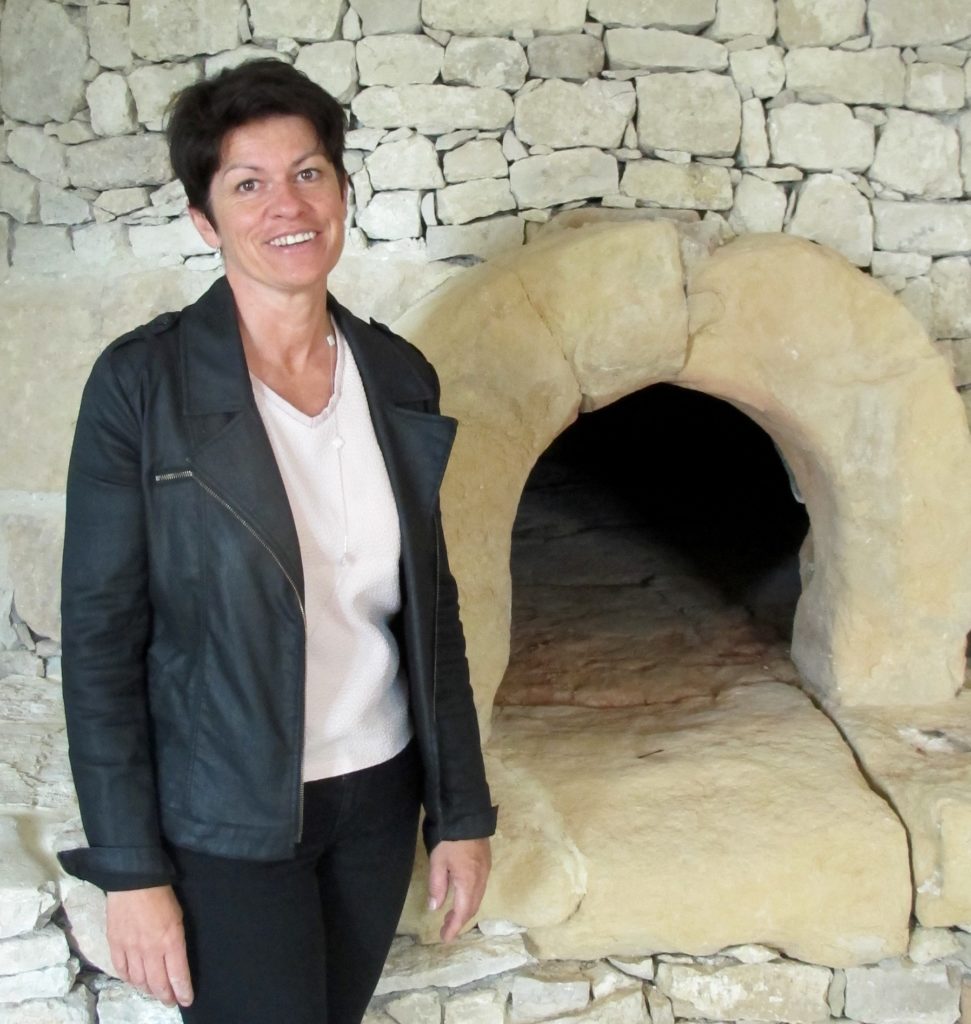
Laurence Biancotto, owner of Le Four des Banes.
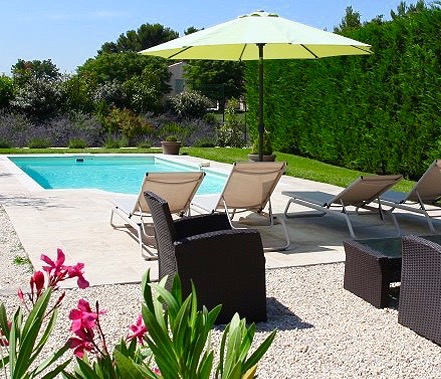
Poolside at Le Four des Banes.

Farouk and Fougueux
When you first arrive in the city of Aix, wander back in time, along the ancient cobblestone streets to the very center of the old city — the Cathédrale Saint-Sauveur. Step inside and you’ll find the site of the original Roman Forum built in the 1st century.
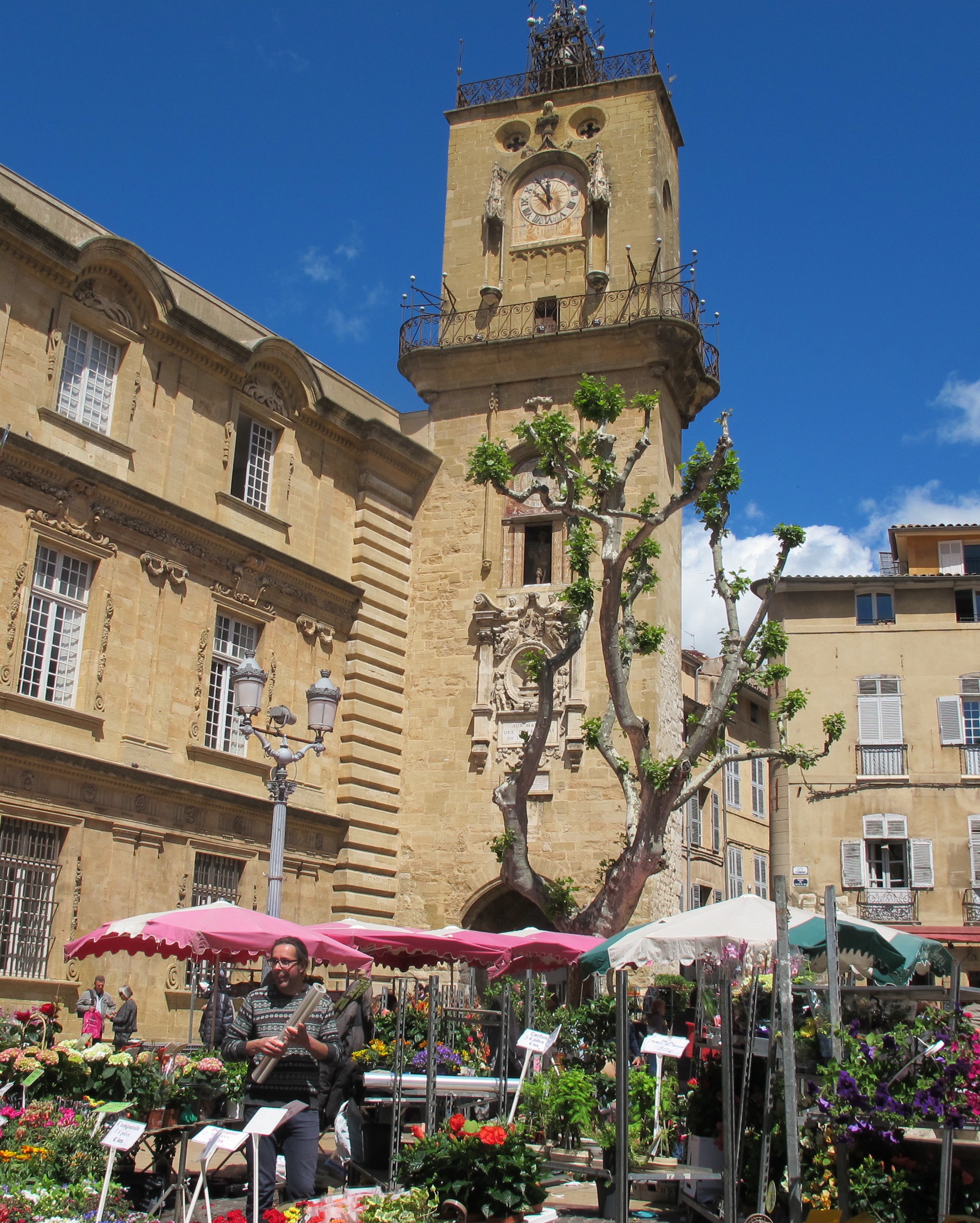
L’Hôtel de Ville, over 500 years old, watches over the main plaza in Aix. Photos by Marla Norman
Now a national monument of France, the cathedral has been rebuilt numerous times from the 12th through the 19th centuries. Romanesque, Gothic and Neo-Gothic architectural elements are all visible. Each era‘s contribution is clearly visible.
From the cathedral, continue south along the rue Gaston de Saporta to the main plaza, where the Hôtel de Ville (City Hall) graces the square. A tall clock tower – dating from 1510 – distinguishes the building and serves as a useful landmark for navigating the narrow, winding streets of Aix.
If you’re lucky enough to be strolling through the plaza on Market Day (Tuesday and Thursday) you’ll find stalls of luscious vegetables and fruit, along with gorgeous flowers.
Also on display will be wonderful local products such as lavender soaps, scented pillows, sea salts, authentic Herbs de Provence in hand-painted jars or brightly colored Provençal tablecloths.
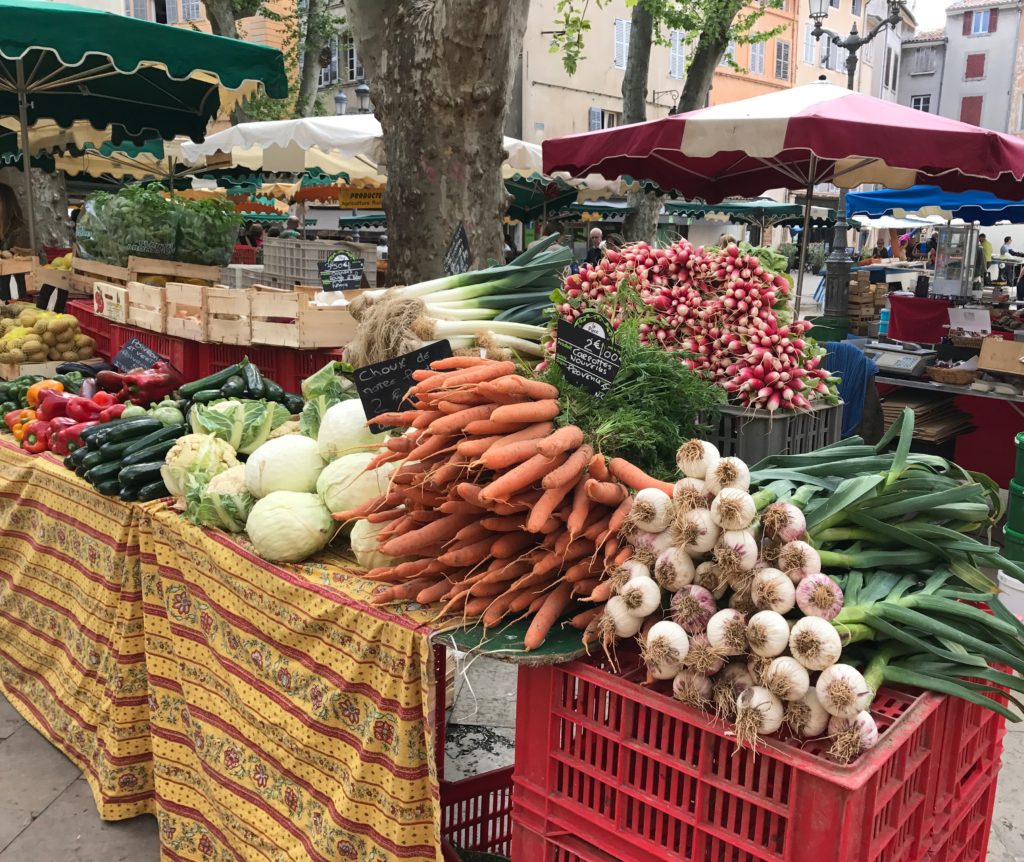
Luscious fresh produce at the weekly market in Aix.
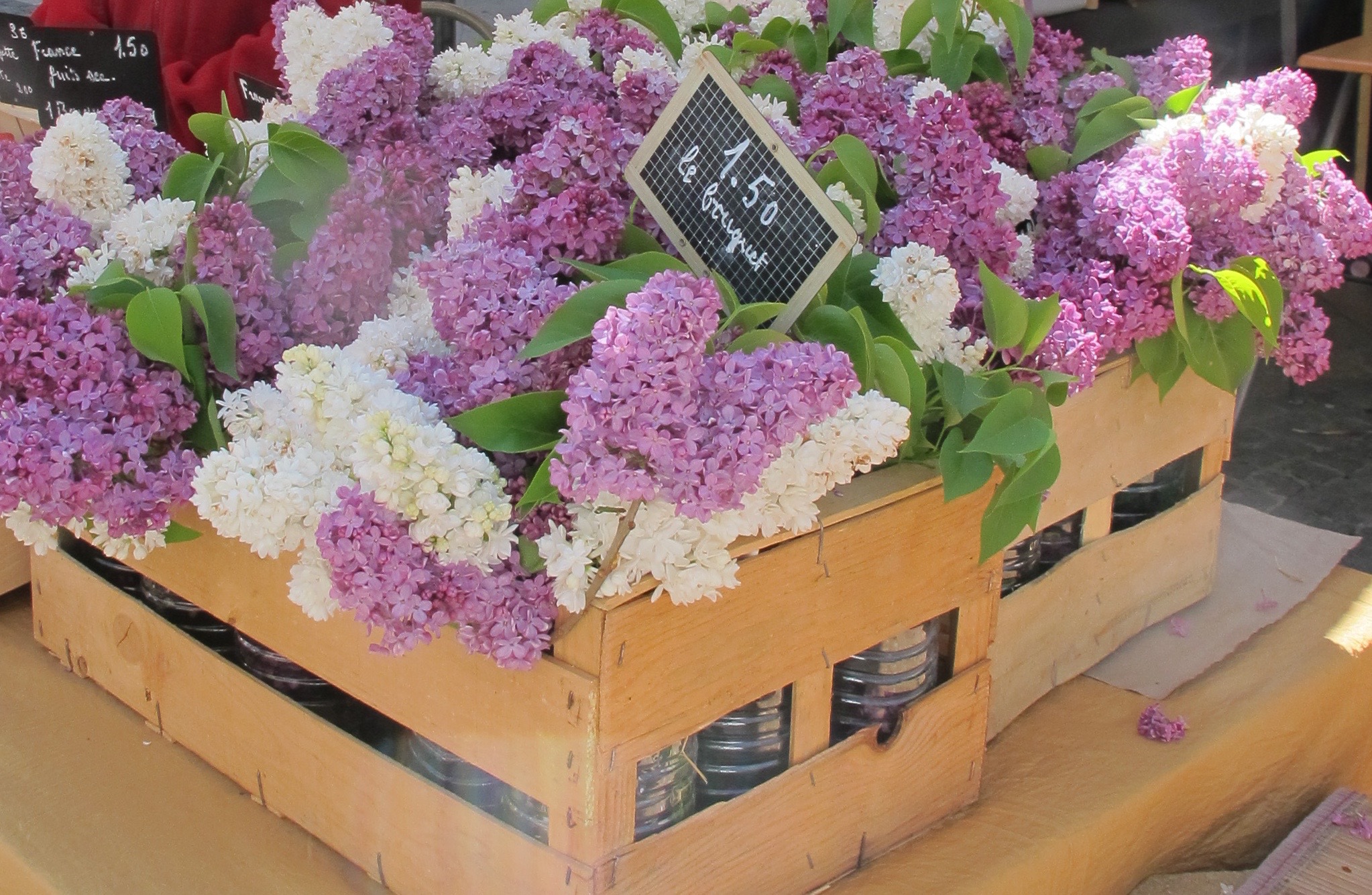
Fragrant lilacs for sale in the weekly market.
Once you’ve scooped up a few treasures, continue on to Cours Mirabeau, the main thoroughfare in Aix, notable for double rows of plane-trees that line the sidewalks.
The city is also known for it’s endless collection of fountains — La Ville des Mille Fontaines (The City of a Thousand Fountains). One of the loveliest is here: Fontaine de la Rotonde. Beautifully lit at night, the Rotonde also divides the newer section Quartier Mazarin from the older Ville Comtale.
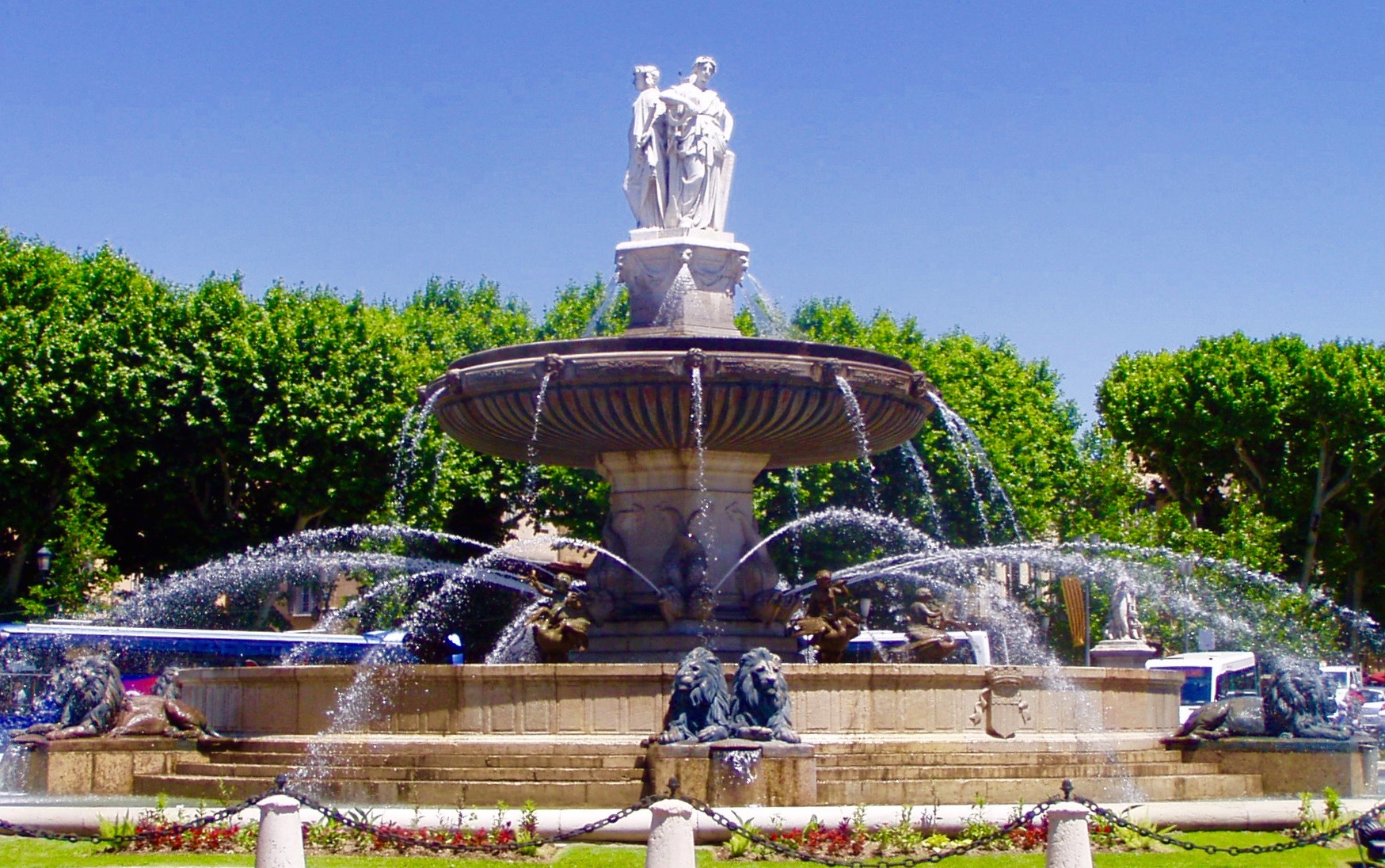
Fontaine de la Rotonde along the Cours Mirabeau, divides the old city from the newer neighborhoods in Aix.
Continue your stroll down Cours Mirabeau and soak up the lively Café scene. At the end of the street, stop in the Famille Perrin Wine Shop. Widely regarded as some of the best winemakers in the region, the Perrin Family is now in its fifth generation of ownership at Château de Beaucastel in Châteauneuf-du-Pape. Ask to sample a few of the wines — the tasting is free — then purchase several bottles to enjoy later. A few of our favorites include: Gigondas, Vins Sobres and — for a real treat — try the old vine Roussanne.
Now, are you ready to try the renown Aixoise cuisine? Find a table at Les Deux Garçons — just next door to Famille Perrin. A canopy across the entrance proclaims the date the property first opened – 1792 – making the restaurant the oldest in Aix. Over the years, the Café was frequented by the likes of Paul Cézanne, Émile Zola and Ernest Hemingway.
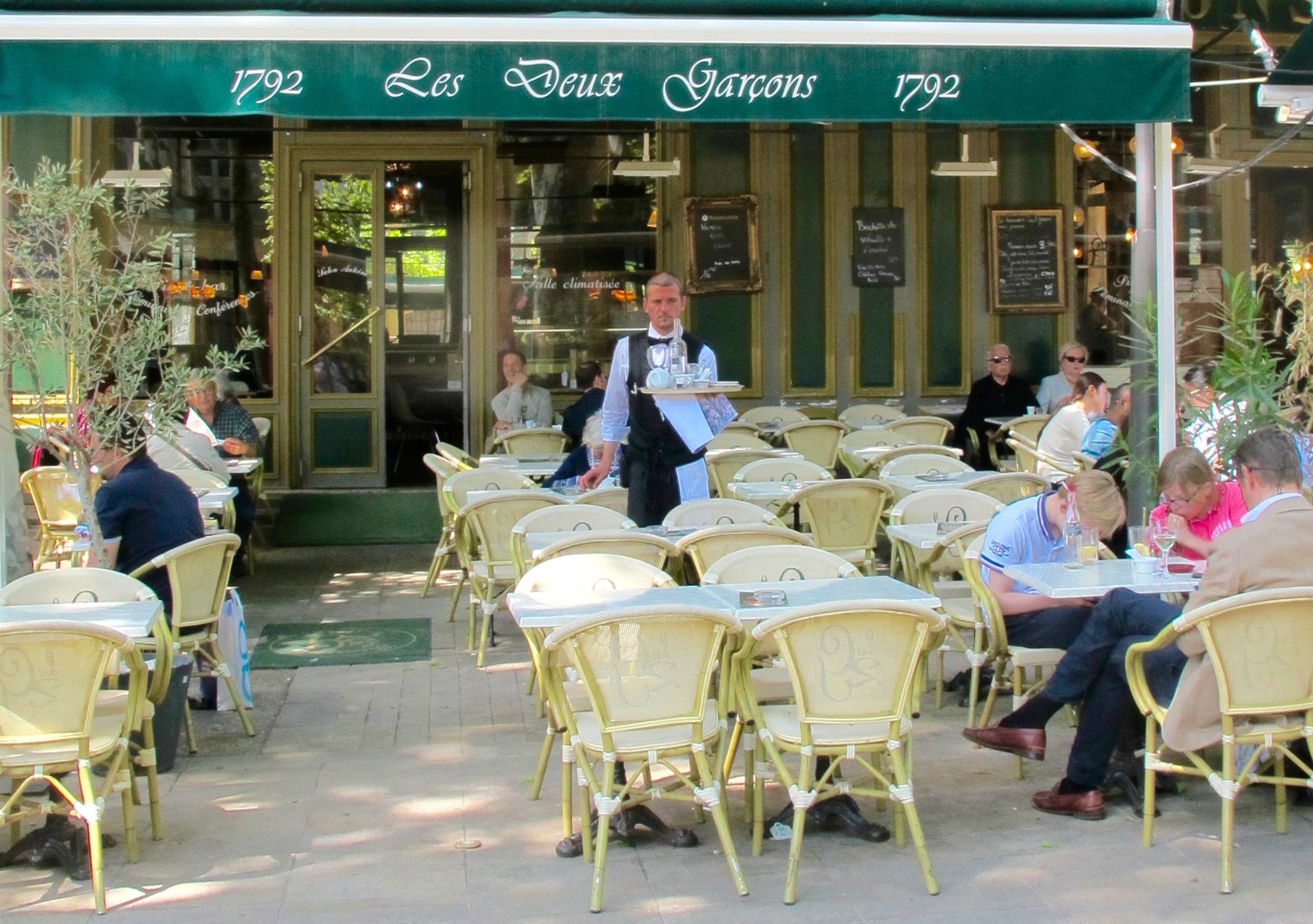
Les Deux Garçons – Opened over 200 years ago and still incredibly popular. Photo by Marla Norman
Begin with your favorite apéritif — perhaps a Pastis, since the anise-flavored spirit was first concocted in Provence. Then order Anchoïade (anchovy and garlic purée served on toast), Petits Farcis (eggplant, peppers and tomatoes stuffed with seasoned meat) or Daube Provençale (beef slowly braised with red wine, onions, herbs and garlic, served with fresh pasta.)
Relax. Sip. Taste. Enjoy. You’re now officially Provençal.
A few more of our favorite restaurant spots:
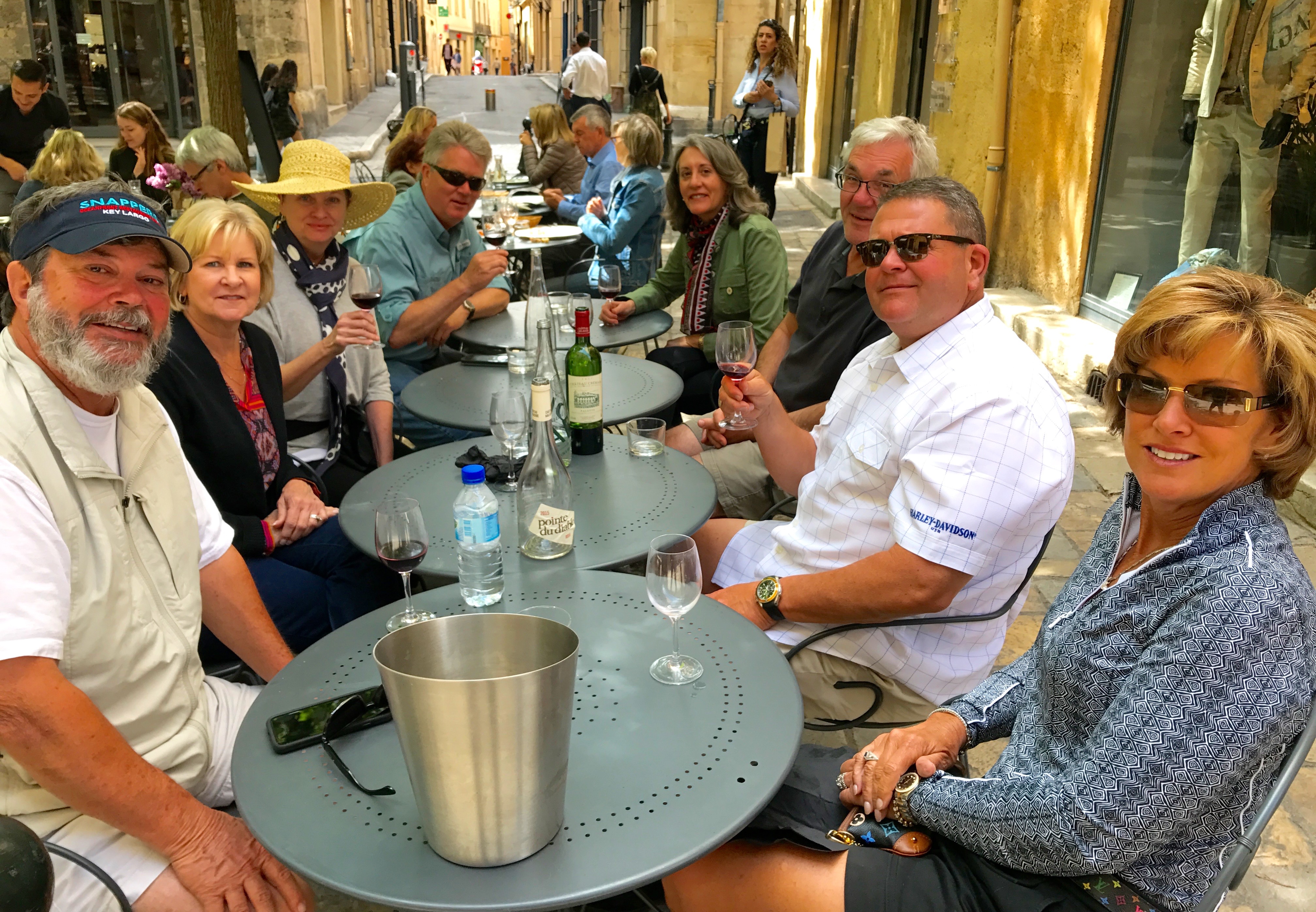
Vintage Provençal dining at Les 3 Ormeaux. Preston & Barbara Gough, Elizabeth & Joe Horsman, Marla Norman, Michel Thibault, Bill & Susie Pinson.
CASUAL
L’Alcôve
19 Rue Constantin
L’Incontournable
4 Rue de Montigny
La Fromagerie du Passage
55 Cours Mirabeau, Passage Agard
Le Millefeuille
8 Rue Rifle Rafle
Les 3 Ormeaux
5 Rue des Epinaux
FINE DINING
La Villa Gallici
18 Avenue de la Violette
Le Mas d’Entremont
315 Route d’Avignon
If you’ve seen the movie Paris Can Wait, you’ll recognize the dining room immediately!
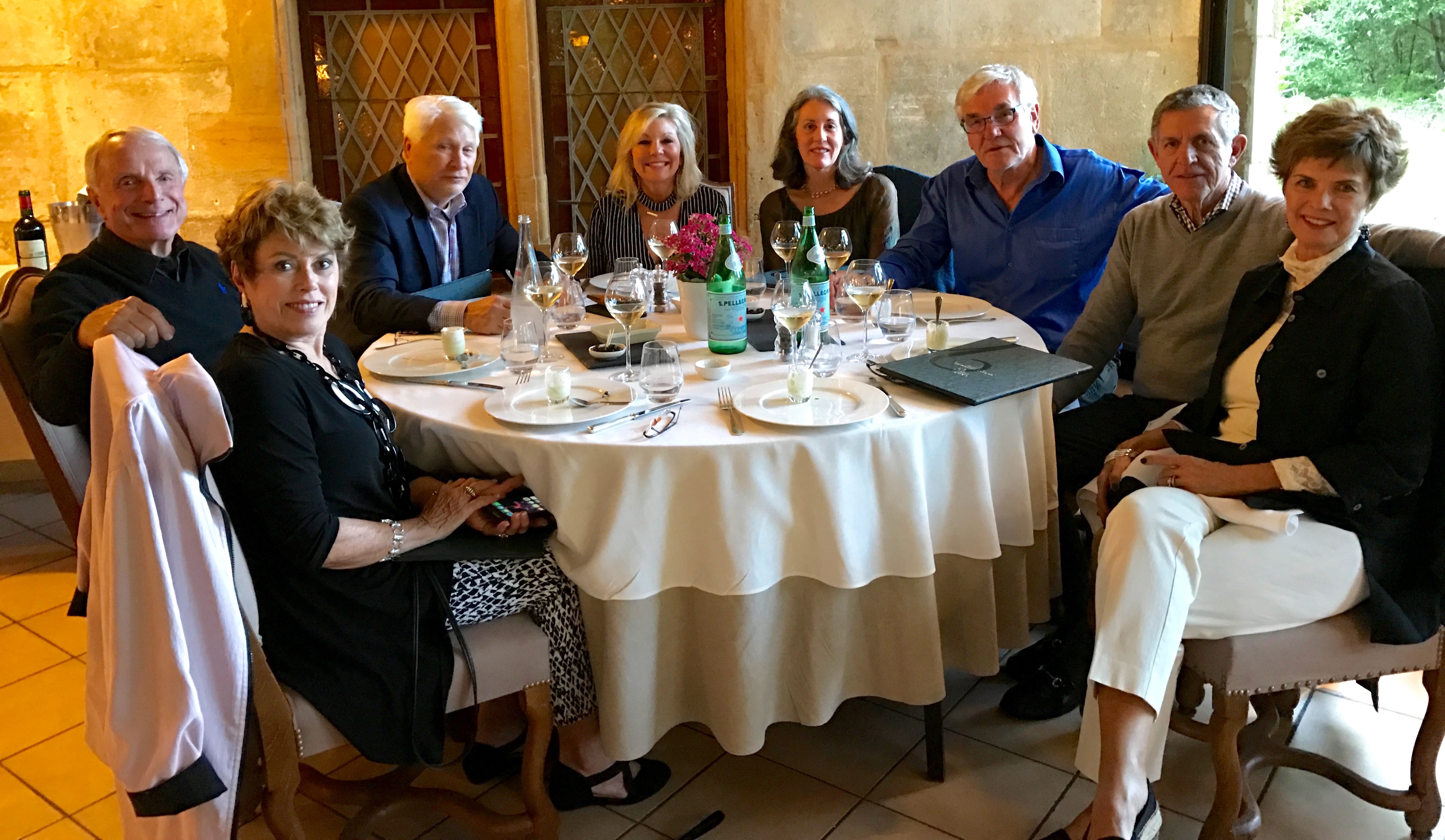
At Le Mas d’Entremont, Kaye & Steve Maynard, Mike & Deidra Stange, Marla Norman, Michel Thibault, Gary & Nancy Scott.
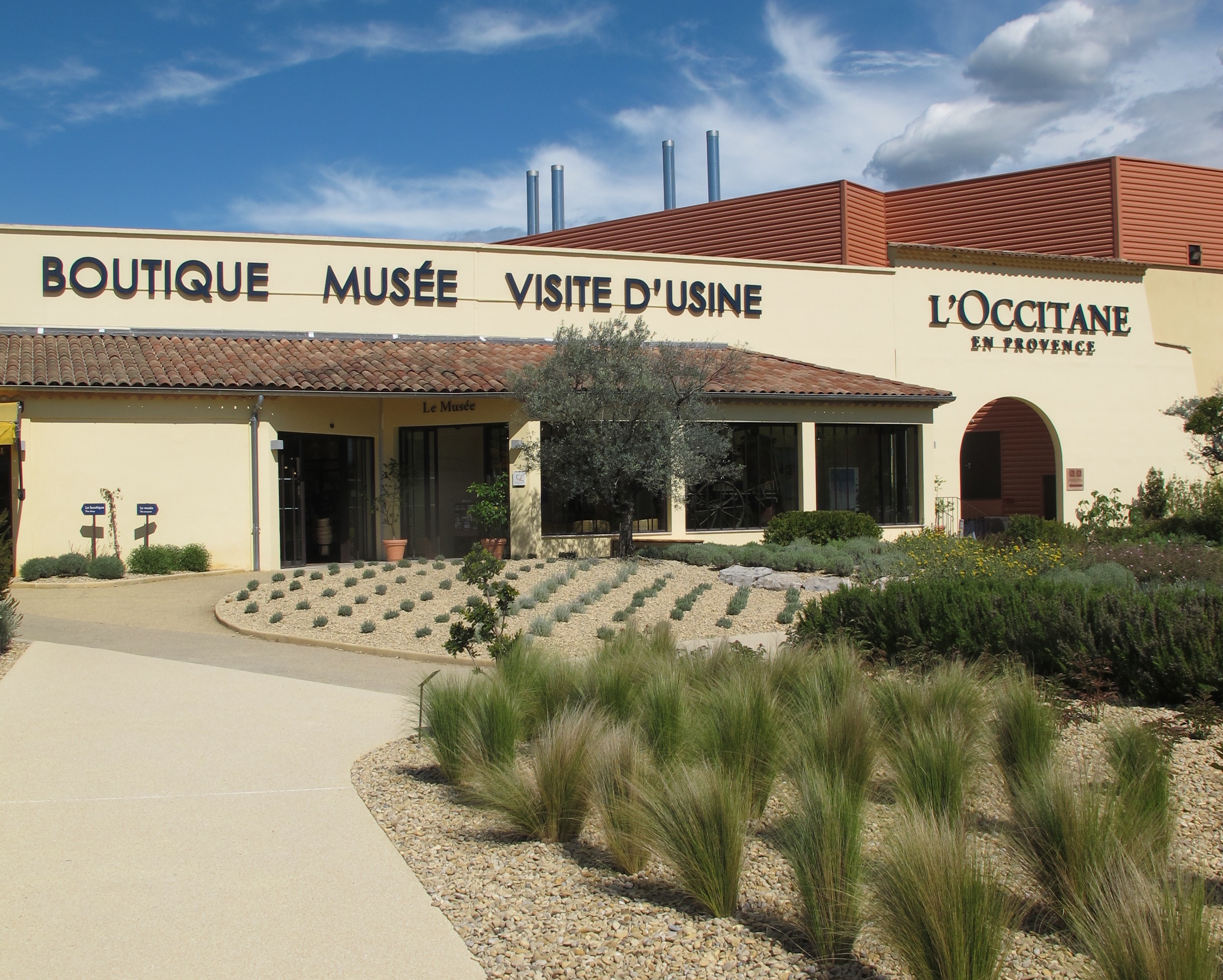
L’Occitane headquarters and laboratories.
LAVENDER & L’OCCITANE
Lavender fields stretching out for miles is, of course, another much-admired feature of Provence. The famous purple flowers begin to bloom in June and are visible until August when they are harvested for the essential oils used to make soaps and fragrances.
L’Occitane de Provence is undoubtedly one of the best known distributors of lavender products in the world — although they now use many other Provençal herbs and flowers to formulate their products. While you’re out admiring the fragrant fields, drop by the L’Occitane headquarters and laboratories, located in Manosque, about 27 miles from Aix.
Visitors are welcome and can participate in tours that include a look at the laboratories where new products are developed, as well as a walk through the factory where products are created, quality-checked and packaged. The tour ends, not surprisingly, at the L’Occitane store — the largest in the world — so be sure to allow ample time for shopping.
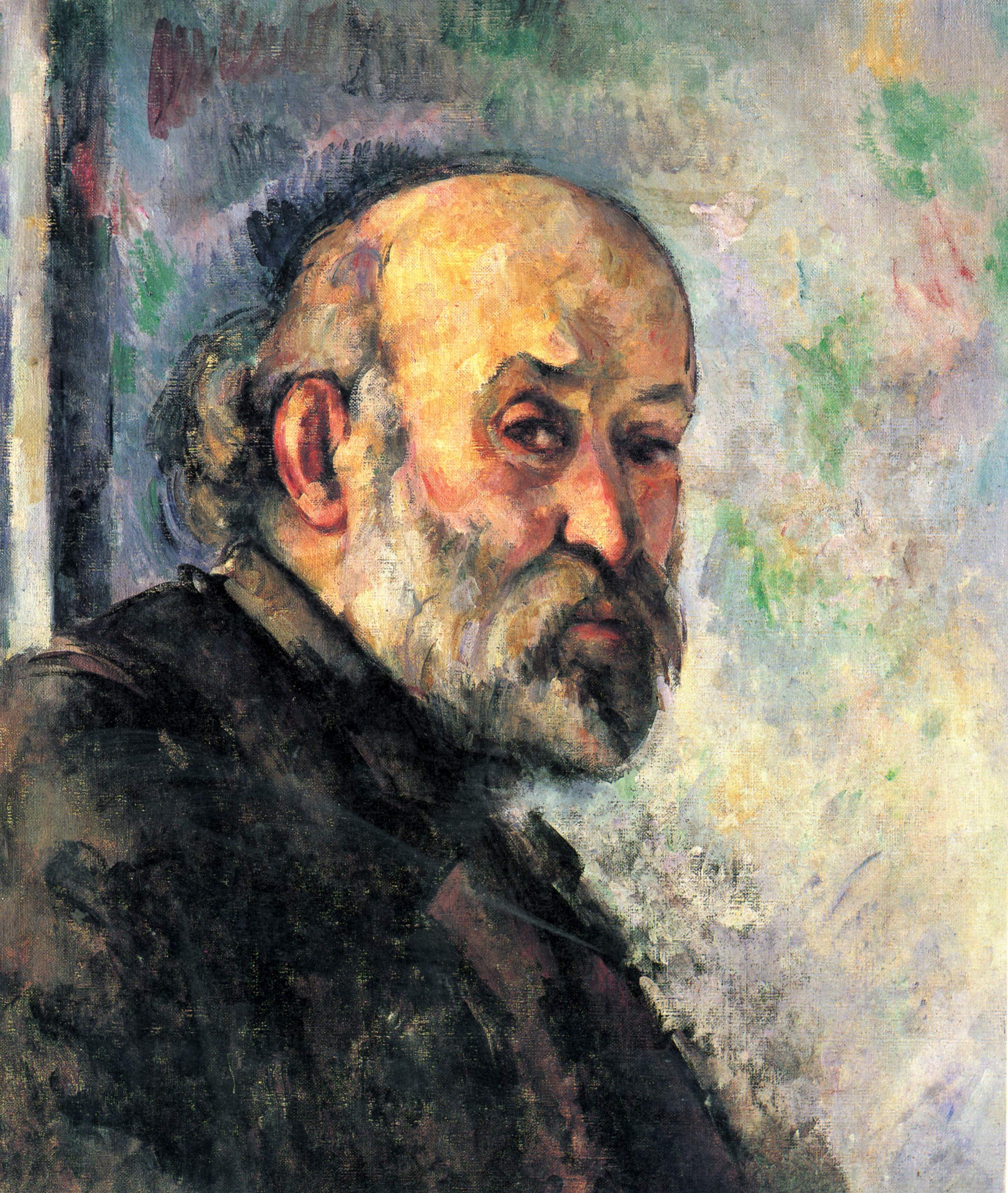
Paul Cézanne, self-portrait, 1895. Image courtesy of Wikiart.
CÉZANNE’S CITY
Well over 100 years years after his death, Paul Cézanne remains a towering presence in Aix. And for good reason. Long before Peter Mayle, L’Occitane, The Travel Channel, and zillions of Provençal-style boutiques, Cézanne drew the world’s attention to the wondrous beauty of Provence.
In the process of painting the region, Cézanne also revolutionized art. His technique of using broad color planes and single-point perspective provided a transition from Impressionism to Modern 20th Century Expressionism. Picasso referred to Cézanne as “the father of us all.”
Visit the great artist’s studio, Atelier des Lauves, located just outside of Aix. Although there is no art on display, you can see Cézanne’s palette, brushes and still-life objects maintained just as they were when he was still painting. From 1902 until his death in 1906, Cézanne worked here every morning. It was at Lauves that he produced works such as Château Noir, the last series of the The Bathers and a number of watercolors.
Back in Aix, Cézanne’s paintings can be viewed at the Musée Granet. Ten masterworks include The Bathers, an early still life, a Portrait of Madame Cézanne, a work in tribute to Delacroix, and a recent addition to the museum’s collections – the Portrait of Zola.
Also within the Musée Granet collections are an impressive 300 works by Bonnard, Picasso, Klee, Rubens, David and Giacometti.
MONTAGNE SAINTE-VICTOIRE
Continue following in the footsteps of Cézanne at Montagne Sainte-Victoire. The mountain is over 3,000 feet high and rises spectacularly from the vineyards and lavender fields surrounding Aix. Named for the Roman General Marius’ victory over the Gauls in 102 BC, Sainte-Victoire was Cézanne’s favorite landscape subject. He painted the mountain 87 times.
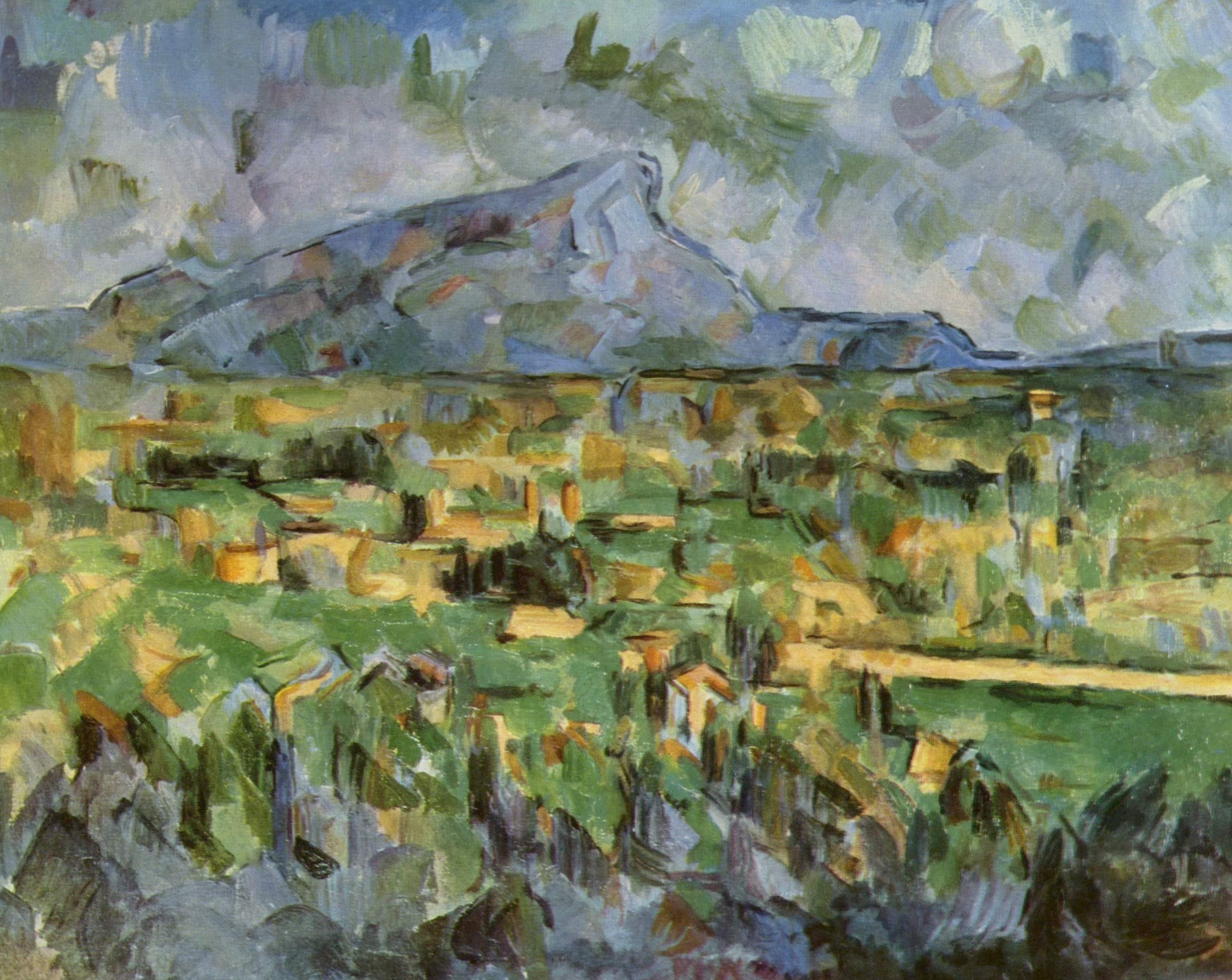
Cézanne painted Sainte-Victoire 87 times. Image courtesy of Wikiart.
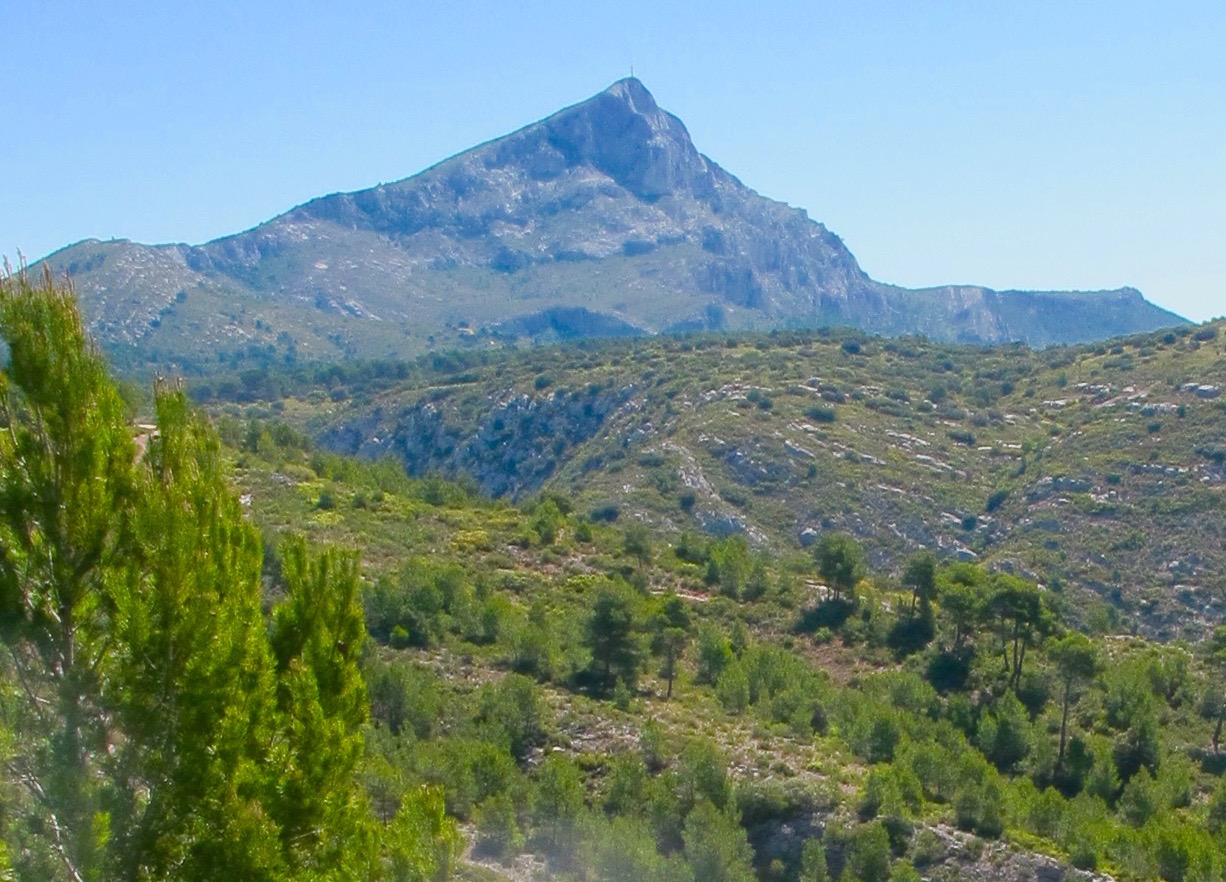
Montagne Sainte-Victoire. Photo by Marla Norman.
To begin your hike, drive a short distance east of Aix to the Bimont Dam. (In summer, start early in the day to avoid searing afternoon temperatures.) There you’ll find numerous trails, each varying in difficulty and length. The Imoucha Trail is a good intermediate hike, approximately 2 hours to reach the Croix de Provence, the famous cross at the top of the mountain.
Cross the vertigo-inducing dam and head up through the pines. You’ll pass the Sainte-Victoire priory, which is now a national park. Take a long break to enjoy the views. If you brought a lunch or snacks this would be the place to enjoy them. Continue another 15 minutes to reach the Cross.
Even a brief walk at the base of Sainte-Victoire is rewarding. The golden sun, ultra-marine skies and melon-colored clouds will surely prompt your artistic side. Like Cézanne, you’ll experience the allure of Provence.




